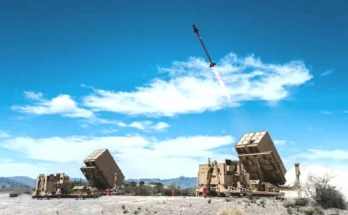Over the next 10 years, $1.3 billion will be spent on the key programs covered in Forecast International’s new analysis, The Market for Decoys and Dispensers. As the COVID-19 pandemic continues to put a strain on defense budgets and production schedules, especially in the hardest hit nations, major programs are moving forward steadily, along with development and production of their critical supporting systems. The decoy and dispenser technology covered in this report provides indispensable self-protection capabilities for vulnerable frontline aircraft and naval vessels and the personnel who operate them.
“While great strides are being made in the development and production of IR countermeasures for more sophisticated methods of attack, the long conflict-tested decoys discussed in this analysis have proven to be among the most affordable and dependable defense systems on the market,” said Senior Analyst Andrew Dardine. “Representative programs in this segment of the larger Electronic Warfare systems market include the ALE-50, ALE-55, Miniature Air Launched Decoy (MALD), and BriteCloud airborne systems and the NULKA naval decoy.”
The next several years should see steady rates of production of the ALE-55 for a variety of U.S. Navy airborne applications. U.S. procurement funding for the decoy is provided in the Department of Defense’s Airborne Expendable Countermeasures program, which purchases countermeasure self-protection devices for all Navy and Marine Corps rotary-wing aircraft and tactical and other fixed-wing aircraft. Through the Airborne Expendable Countermeasures (AECM) program, $361 million is scheduled to be spent through 2024 on ALE-55 units and other systems for Navy and Marine Corps applications.
The ALE-50 expendable towed will also be produced over the analysis period for several applications even as newer, more advanced systems cut into the market. The system can equip a variety of aircraft, including the F/A-18, F-15, F-16, and B-1B. Typically, an aircraft is deployed with three or four ALE-50s for a single mission.
The widely distributed ALE-50 will also be the object of significant support and maintenance contracts. Technical support contracts for the ALE-50 were awarded to prime contractor Raytheon in June and July 2018. These orders would start enhancement work on the decoy and related systems for F/A-18E/F aircraft for the U.S. Navy as well as Australia, Canada, Kuwait, and Switzerland.
At present, the Saab Gripen fighter – one of Europe’s most significant fighter aircraft – provides the best production prospect for the BriteCloud decoy system. It is already in active service with the U.K. Royal Air Force aboard Tornado GR4 aircraft, and prime contractor Leonardo is actively promoting BriteCloud to air forces worldwide.
In May 2019, the U.S. Department of Defense evaluated BriteCloud under the U.S. Foreign Comparative Testing (FCT) program. The Air National Guard led this testing by evaluating BriteCloud launched from countermeasure dispensers installed on U.S. Air Force ANG aircraft.
Meanwhile, the all-important MALD program is meeting a significant part of the countermeasures needs of the U.S. Air Force and Navy. In addition to acting as a decoy, this system is also available in a jammer version. Procurement by the Air Force will reach 3,000 units, split between the decoy and jammer versions. As U.S. Air Force orders fall, the Navy will begin making its own MALD purchases. A version for use on naval combat aircraft (the MALD-N) will be available in the very near future.
Production of decoy systems for naval platforms will also comprise a major part of the market. The vulnerability of vessels and personnel to a new generation of increasingly sophisticated sea-skimming missiles has only increased in recent years. The NULKA decoy system should be made in steady numbers through the analysis period for the U.S. and Australian navies as well as several international customers.
In November 2017, BAE Systems Australia announced a $200 million NULKA upgrade effort. The 20-year program will involve the development of a new launch system and supporting technology to enhance the system’s effectiveness. It will also involve installation of new launch systems on ANZAC frigates.
Electronic Warfare Forecast , authored by Andrew Dardine, provides coverage of self-protection and early warning systems military platforms, both in the skies and on the surface. This service features reports on notable systems such as the Next Generation Jammer and the Eurofighter EW suite, as well as the full range of electronic intelligence gathering and radar and missile warning systems currently available or in development. Pricing begins at $2,295, with discounted full-library subscriptions available. To learn more about Forecast International’s Military Electronics Forecasts, click here.
For 50 years, Forecast International intelligence reports have been the aerospace and defense industry standard for accurate research, analysis, and projections. Our experienced analysts compile, evaluate, and present accurate data for decision makers. FI's market research reports offer concise analysis of individual programs and identify market opportunities. Each report includes a program overview, detailed statistics, recent developments and a competitive analysis, culminating in production forecasts spanning 10 or 15 years. Let our market intelligence reports be a key part of reducing uncertainties and mastering your specific market and its growth potential. Find out more at www.forecastinternational.com



